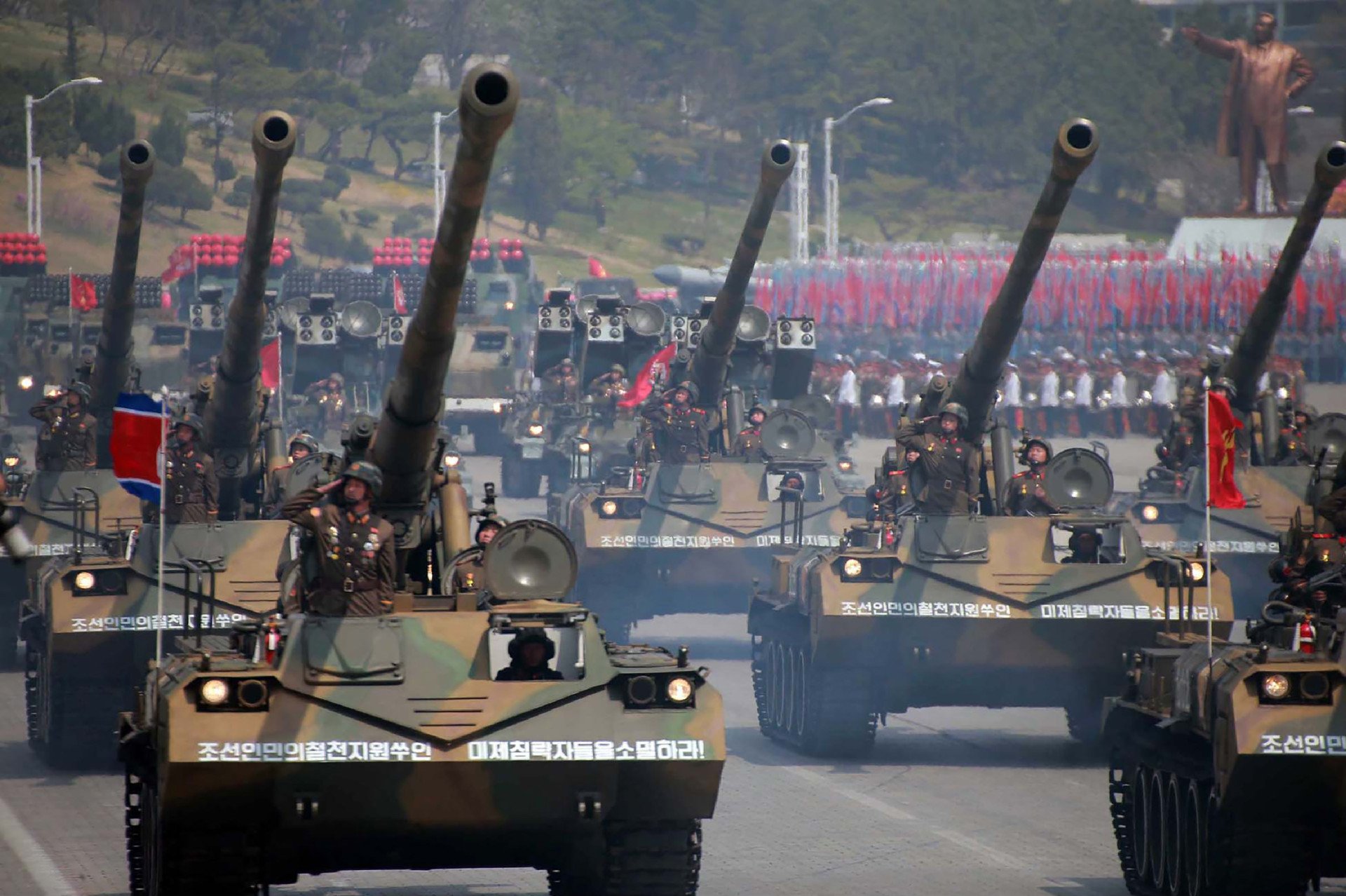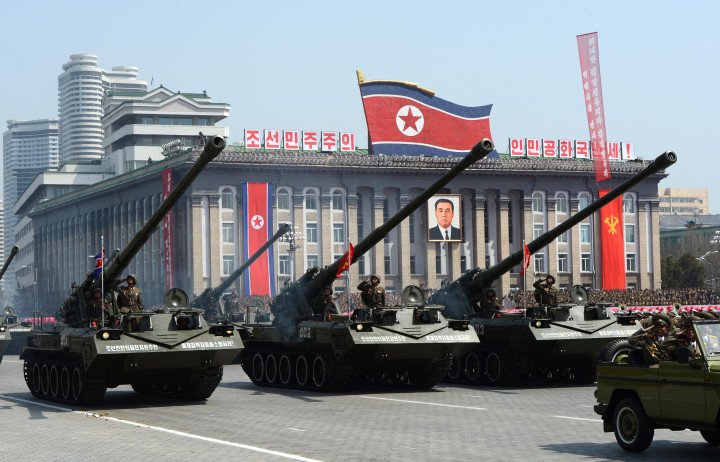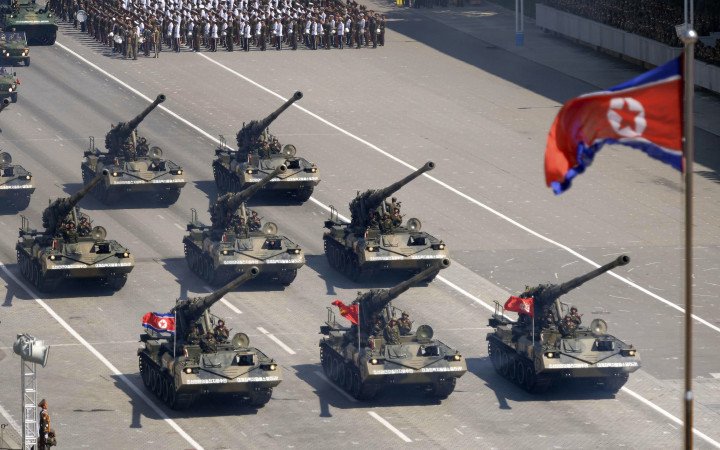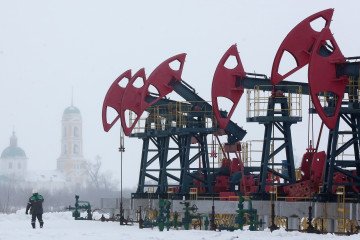- Category
- War in Ukraine
The Koksan, North Korea’s Longest-Range Artillery Gun

North Korean troops are preparing to fight alongside Russia in their illegal invasion of Ukraine, while thousands of North Korean munitions, including self-propelled artillery guns (SPGs), have been shipped to Russia over the last year.
While it’s unclear if the Koksan SPG is among them, Russian forces are now reportedly being trained on North Korea’s SPGs. What do we know about these systems and the long-range Koksan?
It’s been well reported that Russia has a growing alliance of authoritarian powers which includes North Korea.
“We saw officers, technical personnel from North Korea in the temporarily occupied territories of Ukraine,” Zelenskyy said during a press briefing on October 22.

Meanwhile, Russian forces have begun training on North Korean self-propelled artillery systems at Russia’s Higher Artillery Command School (VAKU) in Saratov, reported Ukraine’s ATESH partisan movement.
Both North Korean military instructors and other personnel have reportedly been present in occupied Ukrainian territories, monitoring and providing training. Some will be deployed to fight alongside Russian forces in their illegal invasion of Ukraine as early as November 1, said Kyrylo Budanov, head of Ukraine's military intelligence (HUR), adding that the number of soldiers is closer to 11,000.
Ukraine also has information about the preparation of two North Korean units, “which may even be two brigades of 6,000 soldiers each,” Zelenskyy said during his evening address, stressing that though this poses a challenge, Kyiv knows how to respond.
This “dangerous and highly concerning development” would be “another reckless and dangerous action both on the side of Russia, but of course on the side of DPRK (North Korea),” Washington said during a State Department press briefing on October 22.
Russian media claim that another batch of North Korean soldiers has arrived at Russian barracks.
— UNITED24 Media (@United24media) October 22, 2024
“Here come the beautiful comrades from North Korea,” says the video’s author. pic.twitter.com/XxdNbCF901
North Korea is a totalitarian regime and one of the most secretive countries in the world. Despite also being one of the poorest countries in the world, in 2023, North Korea spent more than a third of its gross domestic product (GDP) on its military.
In March of 2024, South Korea’s Defense Minister Shin Wonsik, reported that since last year, North Korea shipped around 7000 containers filled with munitions and military equipment to Russia. The containers, he said, could have been holding about 3 million rounds of 152 mm shells.
ATESH didn’t establish which variants of SPGs, nor the number that they have. However, this war is artillery-heavy, therefore training on such systems would be beneficial and valuable for Russia.
⚡ "It is now highly likely that hundreds of combat troops from North Korea have arrived in Russia in support of its war of aggression."pic.twitter.com/7vFdgowIcK
— UNITED24 Media (@United24media) October 23, 2024
What self-propelled artillery does North Korea have?
Most of the North Korean missiles are based on soviet designs. Aside from their well-known nuclear threat, North Korea has a mix of tanks that are, according to experts, largely obsolete.
“Its other armored vehicles are large personnel carriers, rather than fighting vehicles, and while its artillery and artillery rocket are effective, its forces have limited numbers of self-propelled systems,” said CSIS, the Centre for Strategic and International Studies.

The U.S. sees North Korea as a grave threat. Despite this, the exact size of their military capabilities is unclear due to the country’s secrecy.
North Korea has 8,600 units of self-propelled and towed artillery but the number of systems of each type needs to be clarified, Defence Express reported.
Defense Express wrote a list, sorted by caliber, using their Western assigned name, of the main self-propelled artillery used by North Korea that could be used in relation to the invasion of Ukraine.
caliber 122 mm: M-1977, M-1981, M-1985 and M-1991;
caliber 130 mm: M-1975, M-1981 and M-1991;
caliber 152 mm: M-1974; M-1977; M-2018;
caliber 170 mm: M-1979 and M-1989
The M-1979 and M-1989 170mm caliber belong to the Koksan self-propelled artillery line. Little is known about most artillery systems, but the Koksan has a little more available history to explore.
Russia attacks Kyiv region with ballistic missiles from the North Korea. pic.twitter.com/11yD2TDWSJ
— UNITED24 Media (@United24media) August 6, 2024
What is North Korea's Koksan self-propelled artillery gun?
The Koksan is North Korea’s longest-range non-rocket artillery weapon, first identified by the U.S. in 1979, in the North Korean city of Koksan—which is where it was given its Western name. Military experts note that the Koksan’s design takes elements from Russian coastal artillery.
Interestingly, the Koksan 1979 is currently used by both North Korea and Iran. This could also be relevant to Russia and Iran’s strengthened alliance, also known as an “axis of evil”. It was first tested during the Iran-Iraq War (1980-1988), where it “proved to be a highly effective counter-battery weapon.”
North Korean M1978 "Koksan" 170mm SPA (based on Type 59 chassis) in service with the Islamic Republic of Iran Army during the Iran-Iraq war, 1980s period. pic.twitter.com/uPdNGjyuPg
— B-AREV (@trip_to_valkiri) June 19, 2024
It has an effective firing range of up to 40km using standard munition and 60km with rocket-assisted shells, firing 1-2 shells every 5 minutes. Its gun is open-mounted, thus providing no protection for its assumed 4-6 crew members.
Due to the size of the Koksan 1979, it needs to be accompanied by a second vehicle to transport its ammunition. Its successor, the 1989 can, however, carry 12 ammunition shells on board.
Since 2022, Russian propagandists have been reportedly speculating that North Korea may supply the Koksan systems to Russia, in supplement to their large-caliber self-propelled systems.
-46f6afa2f66d31ff3df8ea1a8f5524ec.jpg)
-6359eca46c72bde40a90abaaadd6eaa8.png)
-29a1a43aba23f9bb779a1ac8b98d2121.jpeg)


-206008aed5f329e86c52788e3e423f23.jpg)
